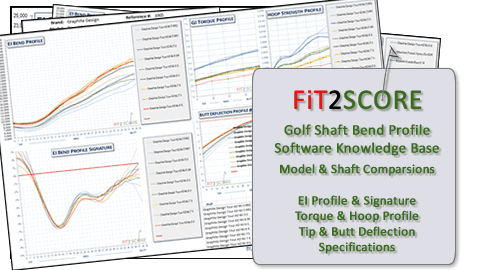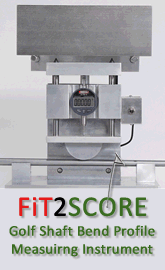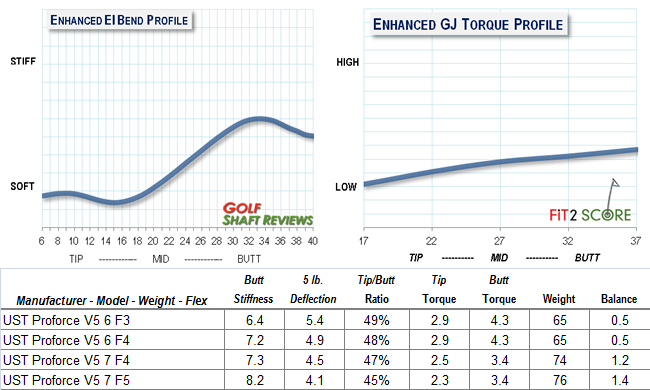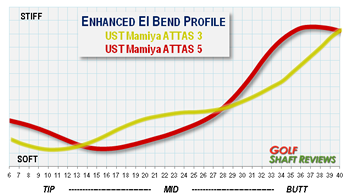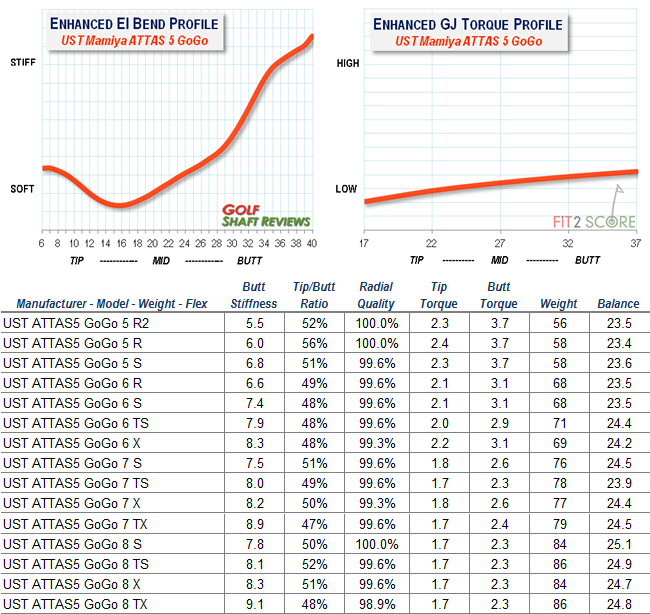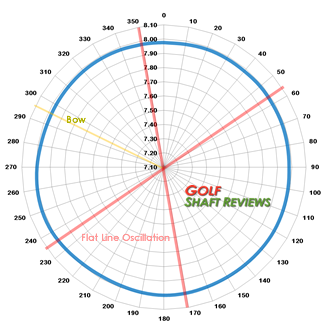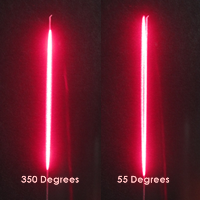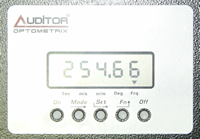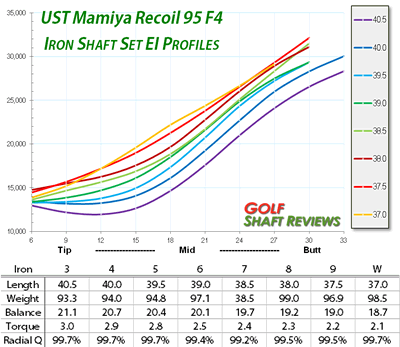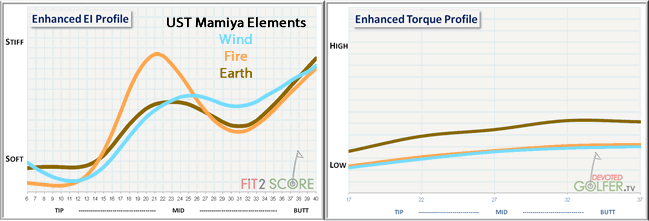UST Mamiya ATTAS3 & ATTAS4u
 The UST ATTAS3 and ATTAS4u driver shafts are ultra premium models made from ultra-high modulus, low resin content materials. This is the trend in professional quality driver shafts. The material cost and the price of this class of golf shafts is well beyond the retail price of stock drivers. The MSRP on these shafts is $560, they are only available from UST TourSPX dealers. At this price, you would not want to invest in a shaft that had not been tested with your swing by a professional, launch monitor equipped fitter.
The UST ATTAS3 and ATTAS4u driver shafts are ultra premium models made from ultra-high modulus, low resin content materials. This is the trend in professional quality driver shafts. The material cost and the price of this class of golf shafts is well beyond the retail price of stock drivers. The MSRP on these shafts is $560, they are only available from UST TourSPX dealers. At this price, you would not want to invest in a shaft that had not been tested with your swing by a professional, launch monitor equipped fitter.
UST Mamiya ATTAS4U

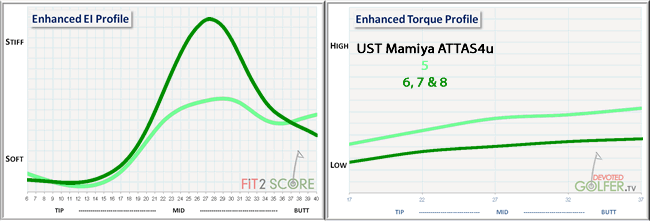
The model number, 5, 6, 7 & 8 accurately represent the weight of the shafts when cut to installed lengths. The balance points ranged from 24″ to 25″ not putting these into the category of counterweighted designs. Torques measured in the same range as the UST VTS Silver, marking this as a mid torque design. When I use that term, I am discussing torque in the range found in ultra premium golf shafts. That range is entirely different from what is typically found in off the rack golf clubs. Off the rack driver shafts start beyond what is found at the high end of the range of tour quality driver golf shafts.
The measurements of the ATTAS4u revealed two distinct profile patterns. The ultra-lite 5 is a different design than the rest of the models. This is not an uncommon practice. Ultra-lite shafts are used by a different swing speeds and styles. They should fit that style and the manufacturers are wise enough to model the designs to the player most likely to use them. This shaft features a stiff mid, found by UST research to control dispersion. Our testing found it to me a mid launching design with slightly lower spin than the companion ATTAS3.
UST Mamiya ATTAS3
 c
c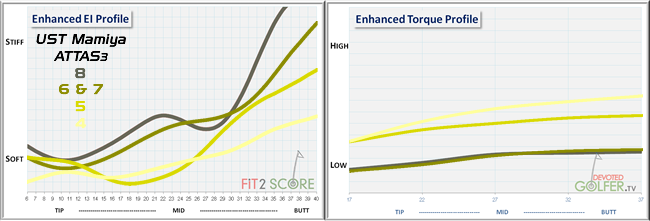
The UST Mamiya ATTAS3 looks like a sibling of the ATTAS4u, the graphics are identical, only the color changed. Torque values are about one half a degree higher through the model when compared to the ATTAS4u. We see multiple designs in the different weights. The ATTAS3 4 model is the first from UST in a premium ultra-lite driver shaft. The raw shafts weighted 48 grams, putting them around 45 grams installed. In this weight range, tip and butt torques of 3.1 and 5.1 set a new standard. This can only be accomplished with high modulus graphite fiber.
Balance points are the same as the ATTAS4u. It should be noted that the radial quality of these shafts is outstanding. Several of the review samples showed NO difference between hard and soft plane stiffness. At this price, one would expect no less. These shafts ooze quality.
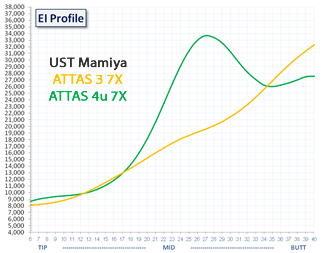 We took the 7X versions to the range for testing by Mark Maness, Mark will be one of our shaft testers in future reviews. Mark was a PGA Tour member in 1988 competing in 28 events including the US Open. He is the Director of Golf Instruction at the Golden Bear Golf Center in Carrollton, Texas. Mark is a PGA Class A instructor and active in the North Texas PGA chapter.
We took the 7X versions to the range for testing by Mark Maness, Mark will be one of our shaft testers in future reviews. Mark was a PGA Tour member in 1988 competing in 28 events including the US Open. He is the Director of Golf Instruction at the Golden Bear Golf Center in Carrollton, Texas. Mark is a PGA Class A instructor and active in the North Texas PGA chapter.
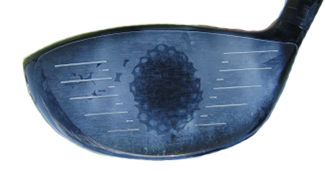
We use Markit spray on the golf club face to document the impact pattern. High and low strikes will influence the launch and loft of the ball flight. A driver face rolls from top to bottom, changing loft as it does so. Most testing is done with a robot to get consistent ball strikes on the center of the club face. Mark Maness is every bit as good as a golf robot. He has the additional advantage of being able to describe the feel, balance and responsiveness of the golf shaft he is testing. The image shown above documents his 7 strikes with the UST Mamiya ATTAS3 7x. As you can see, one was a little high, one was a little low, but the other 5 were dead center. Mark Maness, our own living and breathing ‘iron byron’.
FlightScope Reports
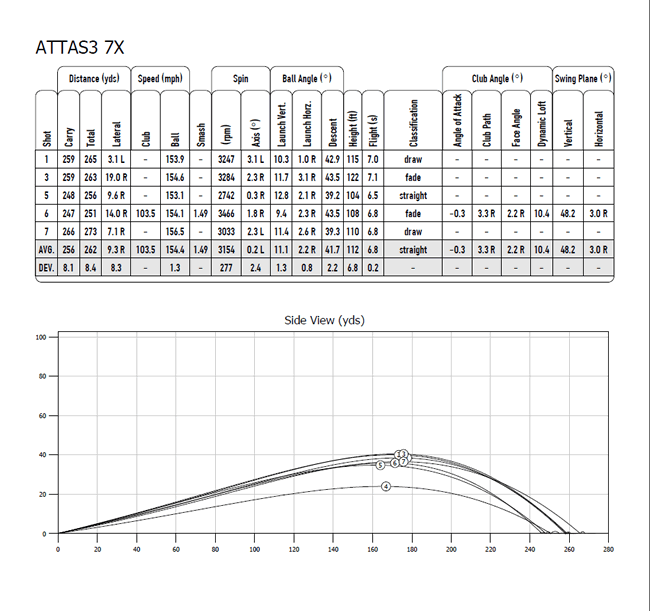
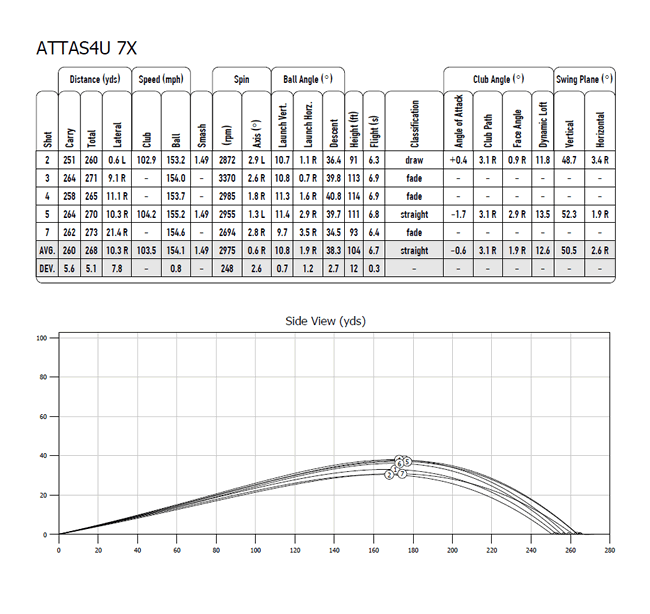 A review of the best 5 of 7 strikes using range balls with a 45 degree left to right cross wind, coming into Mark’s face shows a slightly lower launch lower spin from the ATTAS4u compared to the ATTAS3. This is consistent with what I was told to expect from the UST Mamiya fitter/tester at their Fort Worth US Headquarters. Mark’s comments:
A review of the best 5 of 7 strikes using range balls with a 45 degree left to right cross wind, coming into Mark’s face shows a slightly lower launch lower spin from the ATTAS4u compared to the ATTAS3. This is consistent with what I was told to expect from the UST Mamiya fitter/tester at their Fort Worth US Headquarters. Mark’s comments:
ATTAS4u “I feel a soft tip, my rhythm is too quick for this shaft, it would be a great shaft for a slower tempo swing”
ATTAS3 “I like the feeling I am getting from the tip. The weight of the club feels centered, that is how I sense the shaft loading. I can feel it load from the center”
Remember when looking at these results, this is one golfers fit. Everyone interacts differently to these profiles and the only way to find the right shaft for your swing is with a professional fitter that understands golf shafts and is equipped with a wide range of shaft fitting options.
![]() The UST Mamiya Proforce V5 is a 2014 update of the ever popular Proforce V2. I have never had much experience with this shaft so my comments will be limited to observations of the numbers. Comparing it to the single Proforce V2 that was in the shop, the Proforce V5 torque is about a half degree lower. That creates a more stable tip for the larger heavier driver heads that we now see loaded with bling.
The UST Mamiya Proforce V5 is a 2014 update of the ever popular Proforce V2. I have never had much experience with this shaft so my comments will be limited to observations of the numbers. Comparing it to the single Proforce V2 that was in the shop, the Proforce V5 torque is about a half degree lower. That creates a more stable tip for the larger heavier driver heads that we now see loaded with bling.

